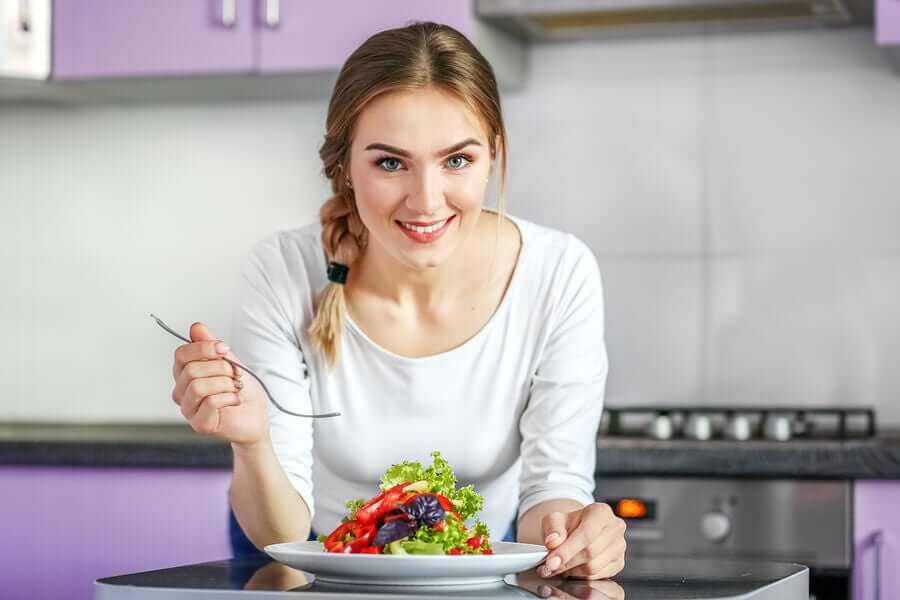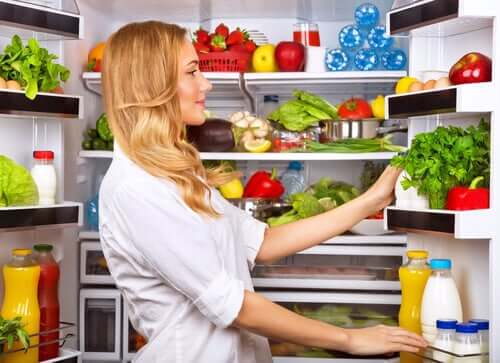What Is Batch Cooking?

Batch cooking is an Anglo-Saxon concept that has become fashionable and has been all over social media for some time now. It literally means “cooking in batches”, in other words, cooking on Sunday to have your meals ready for the whole week. Want to know more about it?
With this method you’ll be able to plan and organize your weekly meals and menu in no time. This lets you prepare healthy food and reduce the time you usually need to prepare the dishes you want to enjoy during the week. It’s a concept that lets you save time and improve your health when it’s done the right way. Are you as interested as us?
How to design a batch cooking menu?
We’re going to teach you the secrets of this cooking method that has become so popular in recent years.
Planning
We recommend you have a weekly template of your menu so that you can organize your meals. This way, you’ll know what you’re going to cook, what you have in the fridge and if you need to buy anything. This also helps you stick to the shopping list and not buy more than you need. It also steers you away from buying ultra-processed products!
Healthy Batch Cooking
It’s important that this menu, aside from saving you cooking time during the week, is also healthy. It’s very useful to create our menu having the “Harvard Dish” as a reference. This dish was created by nutrition experts from the Harvard School of Public Health, which is based on these guidelines:
- Most of your meals have to be vegetables and fruit, and must take up half of the plate. By preparing meals with these ingredients, you’ll provide quality vitamins and antioxidants. Studies have shown that antioxidants are fundamental in preventing complex illnesses.
- Choose whole grains. These must make up ¼ of your plate.
- High-quality proteins, which should be the other quarter of your plate. These nutrients will ensure muscle function. According to research published in Nutrition Research, protein consumption and regular exercise reduce the risk of developing pathologies in lean tissue.
- Using fat that comes from healthy vegetable oils, such as extra virgin olive oil.
In short, keep in mind that your dishes will have to have vegetables, protein, and whole grains. Also, don’t forget to keep an eye out for quantity and distribution.

Ready-made meals
This is one of the bases of batch cooking: having everything ready so that when we get home we only have to open the refrigerator and take out our delicious meal. Or, if you have to eat in your office or at work, having your tupperware ready with healthy and wholesome food.
- As we already know, the base of our menu has to be vegetables and fruit. To save time, we can cut them beforehand. For example, we can cut and put fruits like melon and watermelon in the fridge to enjoy them in the mid-morning or as a summer snack.
- In regards to vegetables, make purees, broths and sofritos that can be frozen and reused. Have gazpacho or salmorejo already prepared so that when you get home you have it ready to eat.
- Have ready-cooked pasta, rice, quinoa, couscous, eggs, potatoes, etc. There’s no need to cook huge quantities, because, in general, we eat them as a side dish.
Also read: Tips for Healthy and Low-Calorie Meals
Take advantage of kitchen tools
In order to have everything ready in an afternoon, we have to know how to take advantage of the time in the kitchen. And in order to successfully do that, we have to make the most of all the utensils and appliances that we have in the kitchen, like the hotplate, the oven, the mixer and, if we have, a kitchen robot.
While we chop with one appliance, we can roast in another and make the sofrito in yet another of our kitchen helpers! In addition, we can take advantage of the heat of the oven and then roast the chicken on one tray with the vegetables, and, on another, we can grill and bake bread or make a homemade cake.
Refrigerating and freezing
It’s important to know where to store each food so that it can last us the whole week. There are certain types of food that can’t be frozen because of their food structure; for example, salads, pasta, potatoes, and eggs. Therefore, we’ll keep them in refrigeration in the fridge.
It’s very useful to freeze stews, vegetables and broths, so they’ll last longer. To preserve food, it’s advisable to use airtight glass, such as glass jars, since they’ll last longer than in a plastic container.

Example of a batch booking menu
Lastly, here’s a menu idea for meals Monday through Friday so you can start practicing batch cooking. Of course, this is just an example! You can vary it to your liking as long as you keep the concept of healthy eating.
Discover: What to Eat and What to Avoid for a Healthy Breakfast
Lunches
- Monday: Salmon en papillote with vegetables and baked potatoes.
- Tuesday: Pasta salad with filleted chicken.
- Wednesday: Spinach with chickpeas and a hard-boiled egg.
- Thursday: Boiled potato dressing with vegetables and octopus.
- Friday: Sautéed vegetables with quinoa and strips of turkey.
Dinners
- Monday: Spinach salad with mozarrella cheese and nuts.
- Tuesday: Glass of gazpacho and potato omelet.
- Wednesday: A beefburger sandwich with vegetables.
- Thursday: Vegetable ratatouille with grilled egg and rye crackers.
- Friday: Carrot and cucumber crudités with chickpea hummus.
Incorporate batch cooking into your routine
Don’t have enough time for healthy cooking? Then try the batch cooking method to get dishes ready that help you take care of both your body and your health.
All cited sources were thoroughly reviewed by our team to ensure their quality, reliability, currency, and validity. The bibliography of this article was considered reliable and of academic or scientific accuracy.
- Zhang YJ., Gan RY., Li S., Zhou Y., et al., Antioxidant phytochemicals for the prevention and treatment of chronic diseases. Molecules, 2015. 20 (12): 21138-56.
- Naseeb MA., Volpe SL., Protein and exercise in the prevention of sarcopenia and aging. Nutr Res, 2017. 40: 1-20.
This text is provided for informational purposes only and does not replace consultation with a professional. If in doubt, consult your specialist.









